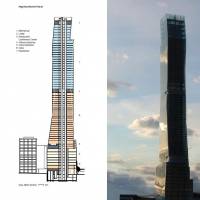Contemporary urban development is increasingly characterized by a reliance on diagrams to convey the rational, statistical point of view of the professional urban planner. In his new book "Urbanisms," architect Steven Holl suggests that just as modern medicine has recognized the power of the irrational psyche, urban planners need to realize that the experiential power of cities cannot be completely rationalized and must be studied subjectively. With a selection of urbanand architectural projects from his thirty year practice, Holl stretches urban planning into the domain of uncertainty. Analyzing a wide range of matters from everyday experiences to spatial data, "Urbanisms" examines how perception and the senses are intertwined with the material, space, and light of urban form. Grouped under themes like Fragments, Porosity, Insertions, Precious, and Fusion, Holl explores concepts such as creating cities from pieces or edges; moving in and out of the spaces between a built environment; inserting architectural elements into complex urban situations; constructing small-scale mini-urbanisms; and preserving natural landscapes. "Urbanisms" presents design solutions for diverse locations including the School of Art and Art History at the University of Iowa in Iowa City; Green Urban Laboratory in Nanning, China; Toolenburg Zuid Schipol, The Netherlands; Fondation Pinault Ile Seguin in Paris, France; and the Master Plan for M.I.T.'s Vassar Street in Cambridge, Massachusetts. A comprehensive exploration of each project illustrates this much-celebrated and influential architect's perspective on large-scale planning.
В книге рассмотрены аспекты современного городского развития с точки зрения профессионального планировщика.


Загрузить
Зеркало:
 Вверх
Вверх